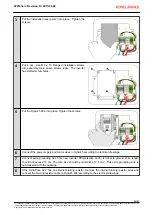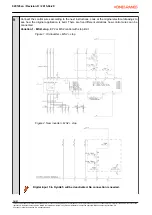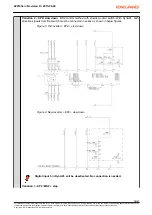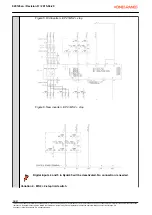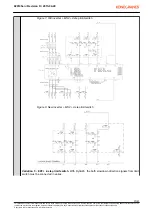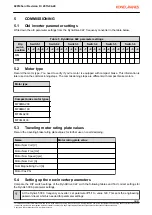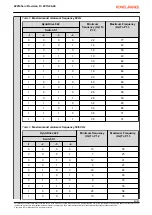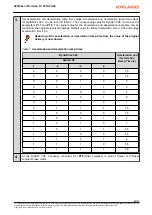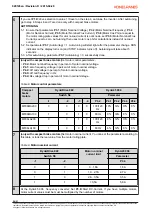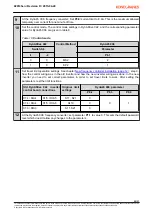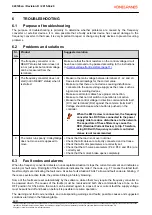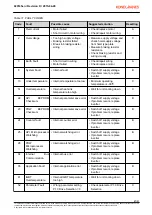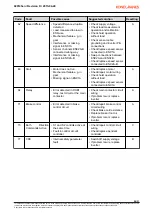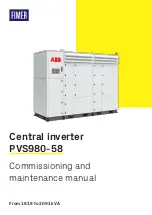
6
TROUBLESHOOTING
6.1
Purpose of troubleshooting
The purpose of troubleshooting is primarily to determine whether problems are caused by the frequency
converter or external devices. It is also possible that a faulty external device has caused damage to the
frequency converter. In that case it is very important to repair or change any faulty devices to prevent recurring
problems.
6.2
Problems and solutions
Sr.
no.
Product
Suggested solution
1
The frequency converter is on
READY status but motor does not
run or just jerks but control voltage
can be measured from the
terminals.
Make sure that the front resistors on the control voltage circuit
have been removed or by-passed according to the instructions
in
Control voltage front resistors (page 11)
.
2
The frequency converter does not
start (not in READY status) when it
is started.
• Measure the main voltage between terminals L1, L2 and L3.
See electrical drawings for the correct value.
• Make sure that there are no devices causing disturbance
connected to the same voltage supply as the crane, such as
big motors or welding devices.
• Make sure all motor cables have proper connection.
• Make sure that no limit switch or operation is not active.
• Measure the control voltage in direction command terminal 1
(DI1) and terminal 2 (DI2) against the common (terminal 7).
Voltage should increase when button is pushed on the
controller.
When the EMC screw is connected, the frequency
converter has RC filters connected to the power
supply side to reduce disturbance to the network.
The capacitors of these filters may cause the
RCD (Residual Current Device) to trip. Therefore,
using RCD with frequency converter controlled
cranes is not recommended.
3
The motor runs poorly: trolley/bridge
does not move as it supposed to
move.
• Check that the load is not over nominal.
• Check that all cables are correctly connected and not loose.
• Check that all motor parameters are correctly set.
• Check that the U/f-curve parameters (P4.2, P4.3 and P4.4) are
correctly set.
• Check that the motor’s brake opens completely.
6.3
Fault codes and alarms
When the frequency converter detects an unacceptable situation it stops the current movement and indicates a
warning or fault code. First digits of the fault code indicates the order f the code, e.g. F1 means the latest fault.
Next two digits are indicating the fault code. At active fault situation FAULT arrow and fault code are blinking. If
there are several active faults, they all are blinking in history browsing.
Some of the faults are reset automatically by the software, while others may require the frequency converter to
be powered down. The causes of the fault(s) must be resolved and both drive commands have to be on the
OFF position for 0.5s before the motor can be started again. In a case of over current fault the supply voltage
must be switched off and back on before it is possible to resume operation.
The warning and fault code numbers and corresponding warnings and faults, possible causes and suggested
solutions are listed in the following table.
020145en / Revision D / 2015-04-29
26/31
This document and the information contained herein, is the exclusive property of Konecranes Plc. and represents a non-public, confidential and proprietary trade secret that may not be
reproduced, disclosed to other parties, altered or otherwise employed in any manner whatsoever without the express written consent of Konecranes Plc.
Copyright
©
(2014) Konecranes Plc. All rights reserved.


